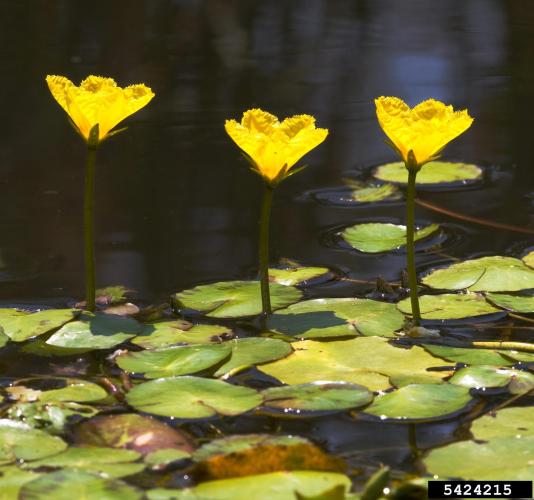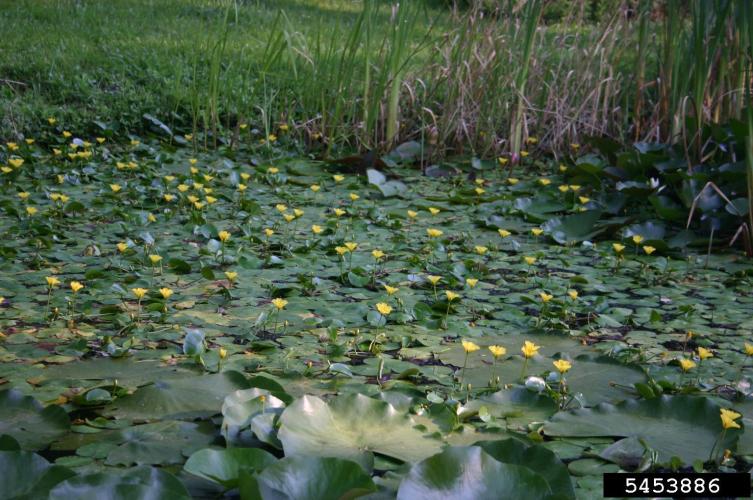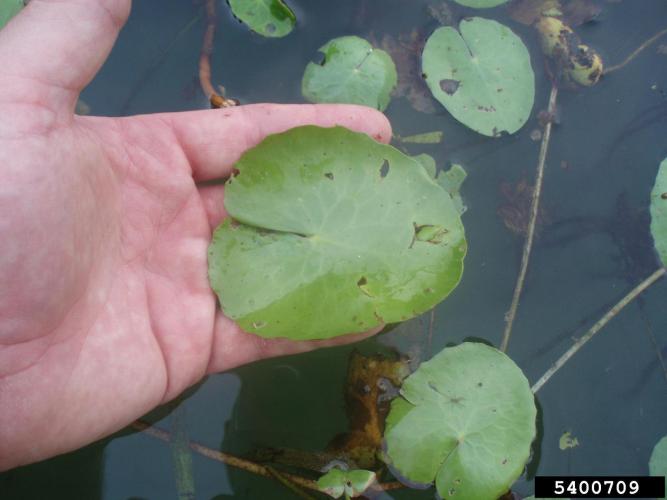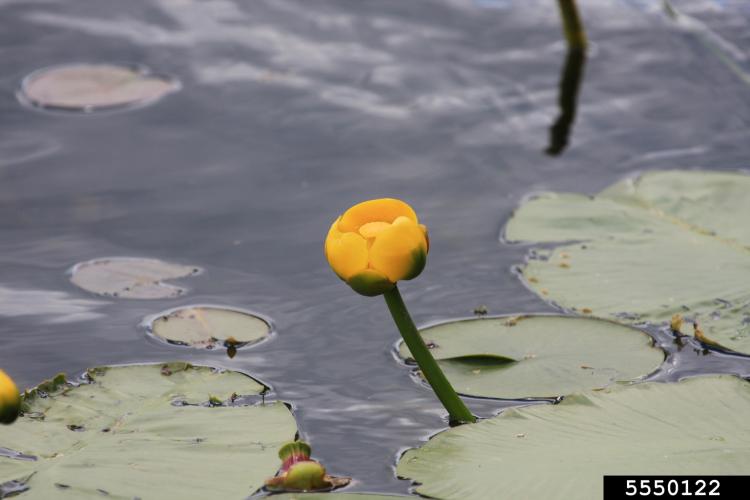Yellow floating-heart
Identification
Appearance
Yellow floating-heart is an aquatic perennial plant found in slow-moving waters and shallow, still waters in muddy environments. Its overall form resembles water lilies, with flat leaves resting on the water and flowers on long stalks above the water’s surface.
Foliage
Yellow floating-heart leaves are heart-shaped (3-15cm diameter) with slightly serrated margins. They are light green to yellow in color. Many yellow floating-heart leaves can stem from the same plant, being arranged in an alternate pattern at the base of the stem and an opposite pattern near the top.
Flowers
Each yellow floating-heart stalk produces 2-5 flowers that rise above the water’s surface. The flowers are yellow, 5-petaled (2-4cm diameter), and each petal is distinctly fringed along its edge. Central stamens and pistils are also yellow.
Biology
Habitat
Yellow floating-heart grows most commonly in ponds, and slow-moving waters that range from 0.5-4.0m deep, but can also be found in wetlands and canals. It prefers muddy substrates to root in and is tolerant of anerobic conditions.
Life Cycle
Yellow floating-heart germinates and grows from April through October, with individual leaves lasting 20-40 days. It produces its flowers between May and October, depending on water temperature. Flowers last one day, but insect pollination still occurs. Self pollination and vegetative spread are additional means of reproduction. In the dormant season, seeds are spread through waterways and embedded in stream and pond banks, and established plants are able to retain nutrients in their root systems until the growing season begins.
Ecological Threat
Yellow floating-heart can grow into dense mats that outcompete native plants. The floating mats limit light penetration and result in low dissolved oxygen concentrations, especially as plant matter decomposes in the fall. These processes lower overall biodiversity and habitat for aquatic animals. Yellow floating-heart is also an impediment to human recreational and fishing activity, impacting boat traffic and activities such as swimming.
Vermont Distribution
Yellow floating-heart has been reported in Rutland and Windsor counties in Vermont.
How You Can Help
For most aquatic invasive species, humans are the primary vector of transport from one waterbody to another. Many of these nuisance plants and animals can be unknowingly carried on fishing gear, boating equipment, or in very small amounts of water in a watercraft. The easiest and most effective means to ensure that you are not moving aquatic invasive species is to make sure that your vessel, as well as all your gear, is drained, clean, and dry.
CLEAN off any mud, plants, and animals from boat, trailer, motor and other equipment. Discard removed material in a trash receptacle or on high, dry ground where there is no danger of them washing into any water body.
DRAIN all water from boat, boat engine, and other equipment away from the water.
DRY anything that comes into contact with the water. Drying boat, trailer, and equipment in the sun for at least five days is recommended. If this is not possible, then rinse your boat, trailer parts, and other equipment with hot, high-pressure water.
Citations
Photo credit
424215: David Cappaert, Bugwood.org
5453886: Leslie J. Mehrhoff, University of Connecticut, Bugwood.org
5400709: Rob Andress, Department of Conservation & Natural Resources, Bugwood.org
5550122: Steven Katovich, Bugwood.org
Information Credit
Pfingsten, I.A. “Yellow Floating-Heart (Nymphoides Peltata) - Species Profile.” Nas.er.usgs.gov, 8 Aug. 2024, nas.er.usgs.gov/queries/FactSheet.aspx?speciesID=243.
“Yellow Floating Heart.” Invasive Species Centre, www.invasivespeciescentre.ca/invasive-species/meet-the-species/invasive-aquatic-plants/yellow-floating-heart/.
Yellow Floating Heart Species Description and General Information How Did Yellow Floating Heart Become Established in Rhode Island? Rhode Island Department of Environmental Management, Nov. 2017.



